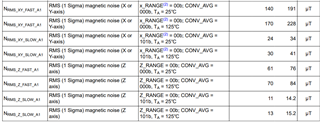Other Parts Discussed in Thread: DRV5057,
Hi Team,
May I ask for help? Our customer is looking for a sensor able to measure both DC and AC magnetic fields (AC in range of 3 to 300Hz or higher).
He need the sensor to have a digital output (SPI/I2C) because the device they are working on will have no analog interface.
I saw this E2E post: https://e2e.ti.com/support/sensors-group/sensors/f/sensors-forum/820307/how-to-measure-electro-magnetic-field
then ask the customer if DRV5057 can be considered since the device produces a pulse-width modulated digital signal output.
But the point is that our customer need some I2C/SPI output sensor because it is the available interface for the device they will be connecting the sensor.
That bring us to checking TMAG5170. Will it be enough for our customer project? Will it be able to measure AC magnetic fields up to 300Hz or higher?
If not, do you know a device that can fit our customer requirements? We hope to receive you confirmation/advise. Thank you so much.
Kind regards,
Gerald


